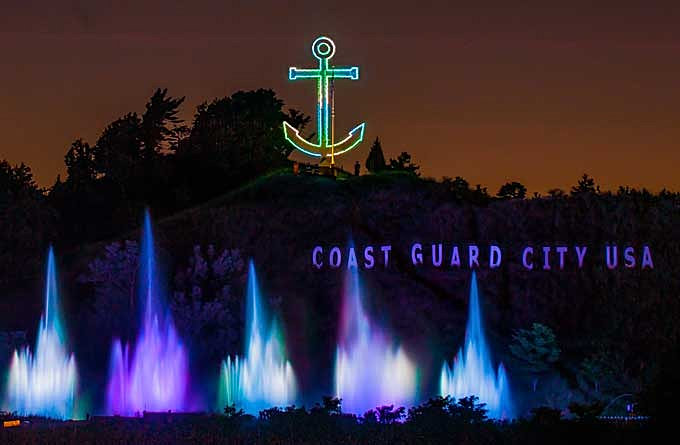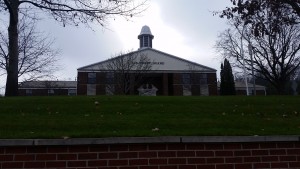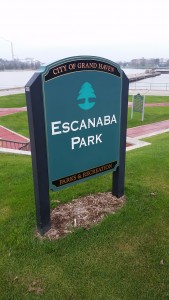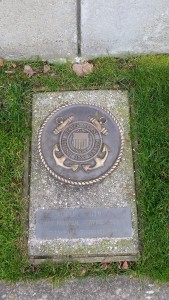
The Coast Guard Festival takes place annually in Grand Haven, Michigan, around late July into early August. This is located along the western edge of Lower Michigan bordering Lake Michigan, and is also known as Coast Guard City, USA. In 1998, Grand Haven served as the first of now sixteen cities to be federally designated as “Coast Guard City U.S.A.” Congress did this in recognition of Grand Haven’s past and continued relationship with the Coast Guard. This was signed by President Clinton on November 13, 1998. The Coast Guard Festival is a weekly celebration of all things Coast Guard, and aims to honor the men and women who have served as part of the military. This is a nationally recognized festival. Attendees come from far-away places to be a part of it, including high ranking members from Washington D.C. Family friendly activities such as concerts, fireworks, a carnival, parades, a car show, Coast Guard ship tours, dancing, cardboard boat racing, and people ready to answer any Coast Guard questions can all be found at the festival [5]. Coast Guard ships from all around come to dock at Grand Haven for the public to tour them. Both the history and the present are represented at the festival. A goal of the Coast Guard Festival is to promote education. As people attend the Coast Guard Festival, they will learn more about how the Coast Guard functions, and the role it plays in the United States safety. Members of the Coast Guard also see this as a way of support by recognizing the sacrifices in the service they provide.
Founding of Grand Haven
Settlers arrived at the mouth of the Grand River on November 2, 1834 [3]. It provided an ideal place for trading, as the river was both deep and wide for boats to travel through with ease on their way to and from Lake Michigan. The heavy logging taking place in Michigan during the same time only added to the population of the town. The river could easily float logs down stream. The increasing population in the area led to the founding of the town Grand Haven. The addition of recreational use of the river during a time of heavy use by trading caused many shipwrecks. This caused concern, and required a service that could help out during these accidents.
The first crew of lifesavers was formed in 1871 [3]. Lifesavers were a group that would respond to ships in distress and attempt to help out. They gained much respect over the years, as they had saved many lives. The town of Grand Haven welcomed their service and showed their appreciation.
Creation of the Coast Guard
On June 5, 1912, Secretary of the Treasury Franklin McVeigh proposed that the Revenue Cutter Service and the Life Saving Service merge together. He argued that the rescue functions of the two services would complement each other. The bill was approved by the Senate in March 1914. Representative William Adamson of Georgia made the point that the merger of the two would provide a trained Naval Reserve. The bill passed 212-79. President Wilson supported this proposal, and was glad to sign it into law on January 28, 1915 [4]. This was the day the United States Coast Guard was created.
During 1920, the Coast Guard was divided into three groups: cruising, patrol, and lifesaving [4]. The cruising group was responsible for the enforcement of maritime laws, and helping vessels in distress. The patrol group was the only group not located in the Great Lakes, as this field focused on deep-sea tasks. The last group was lifesaving, and the Tenth District was comprised of 21 stations that reached from Lake Huron, to Lake Michigan, and Louisville, Kentucky. The Tenth District’s headquarters was located at Grand Haven, Michigan.
Besides these main tasks, the Coast Guard also were responsible for other things. During 1920, the Coast Guard made sure that no liquor entered the United States through the seacoast, including the Great Lakes. This was during the age of Prohibition under the Volstead Act. During the 1930s, the increasing use of oil over coal demanded that the Great Lakes be kept available for travel during the winter. The Coast Guard took care of this problem with the creation of the ice breakers. The first ice breaker was called Escanaba, was steam powered, and measured 165 feet. It arrived in Grand Haven on December 9, 1932 [1]. It was stationed in Grand Haven while not on the lakes breaking ice. While The Escanaba’s main strength was clearing pathways through built up ice, it also has saved countless lives that found themselves in trouble during the Great Lakes storms.
During World War II, the Coast Guard made sure that sabotage did not take place during the shipping of war related products throughout the Great Lakes. This was a main area for ship construction, and thus required extra security. Escanaba was tasked with serving convoy duty starting in March 1942. While escorting the transport ship USAT Fairfax through the North Atlantic, a German submarine sunk Escanaba on June 13, 1943 [1]. Only 2 of the 103 crew members from The Escanaba survived the explosion [4].
On August 4, 1943, 20,000 people at Grand Haven paid respect to the 101 lost on The Escanaba. On May 30, 1944, the mast and gear were placed at Kelly Memorial Park in Grand Haven. On August 4, 1949, the park was renamed Escanaba Park in honor of the ship and crew members [2]. During Grand Haven’s annual Coast Guard Festival, a memorial service is held here in honor of Escanaba and others in the Coast Guard. The citizens of Grand Haven and surrounding areas had purchased $1,000,000 of war bonds within three months in order to construct a new cutter [4]. In memory of The Escanaba, the new cutter was named after it [1].
The people of Grand Haven and its surrounding areas have a long history with the Coast Guard. Many operations have taken place here. Locals have lost loved ones, and honor them and the other brave men and women of the Coast Guard during Grand Haven’s Coast Guard Festival.
Coast Guard Festival
The Coast Guard festival had small beginnings. It started as a service member only company picnic in Grand Haven during 1924. A rowing competition also took place during the picnic. The picnic grew in popularity, eventually allowing the public to join in during 1937 when the first festival was conducted. That festival grew over the years to include 350,000 people in the present day [7]. The Coast Guard Festival is nearly as old as the Coast Guard itself, as that was founded during 1915 [6].
The National Coast Guard Memorial Service is the main focus of the festival, held in Escanaba Park. It honors the men and women who served in the Coast Guard, and followed their motto of SEMPER PARATUS “Always Ready”. Special recognition is given to those that have “passed over the bar” during the last year. Recently, during the 200th anniversary, a group of United States Coast Guard Women’s Reserve (SPARs) women that served in the Coast Guard during World War II attended the Coast Guard Festival [7]. Here they recounted their experiences. The Coast Guard festival recognizes the importance of preserving history by hearing these stories.
The Coast Guard Station in Grand Haven acts as a host to the festival. It accomplishes tasks such as law enforcement, and search and rescue during calm, bad weather, and ice conditions. It is located along the Grand River in the town. The Grand Haven Station at times joins forces with the Holland Station located 20 miles south on Lake Macatawa [8].
The Grand Haven Station, the local municipalities of Grand Haven, the nearby towns of Spring Lake and Ferrysburg, enthusiastic volunteers, and sponsors all help towards keeping the Coast Guard festival an annual celebration for the servicemen and women that have provided their expertise to this field of work.



Primary Sources
1. Bureau of History, Michigan Department of State Registered Local Site No. 1831, 1991.
2. City of Grand Haven Parks and Recreation, Escanaba Park Sign.
3. Ewing, Wallace K., and David H. Seibold. Maritime Grand Haven: Coast Guard City USA. Charleston, SC: Arcadia, 2006. Print.
4. O’Brien, T. Michael. Guardians of the Eighth Sea: A History of the U.S. Coast Guard on the Great Lakes. Place of Publication Not Identified: Ninth Coast Guard District, 1976. Print.
Secondary Sources
5. Grand Haven Coast Guard Festival, (http://www.coastguardfest.org/about-us)
6. Johnson, R. E (1987). GUARDIANS OF THE SEA: HISTORY OF THE UNITED STATES COAST GUARD, 1915 TO THE PRESENT. Naval Institute Press.
7. Scheina, R. L. (1990). “Coast guard history,” Naval History, 4(1): 71.
8. United States Coast Guard (https://www.uscg.mil/d9/sectLakeMichigan/units/STAGrandHaven.asp)
